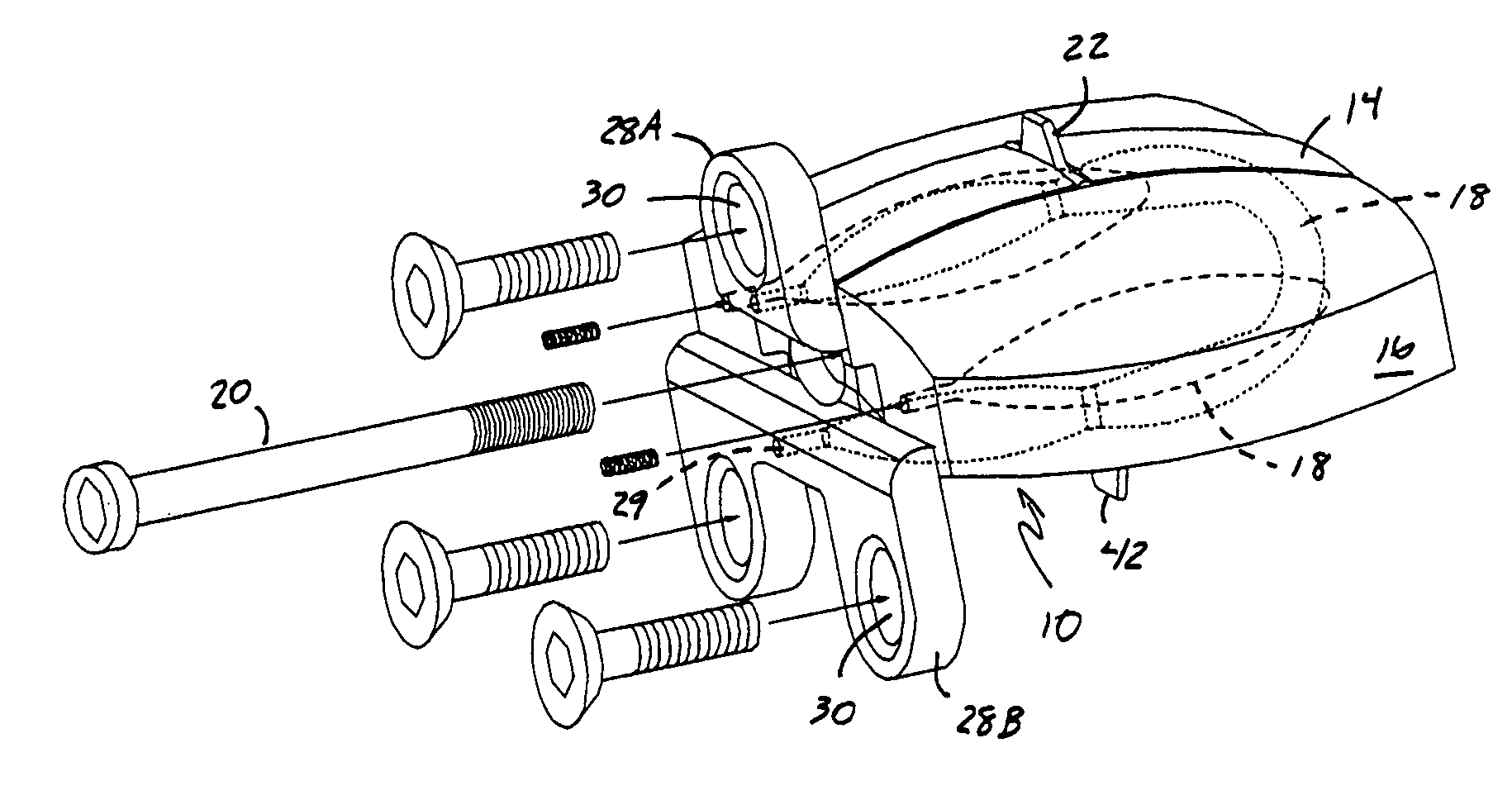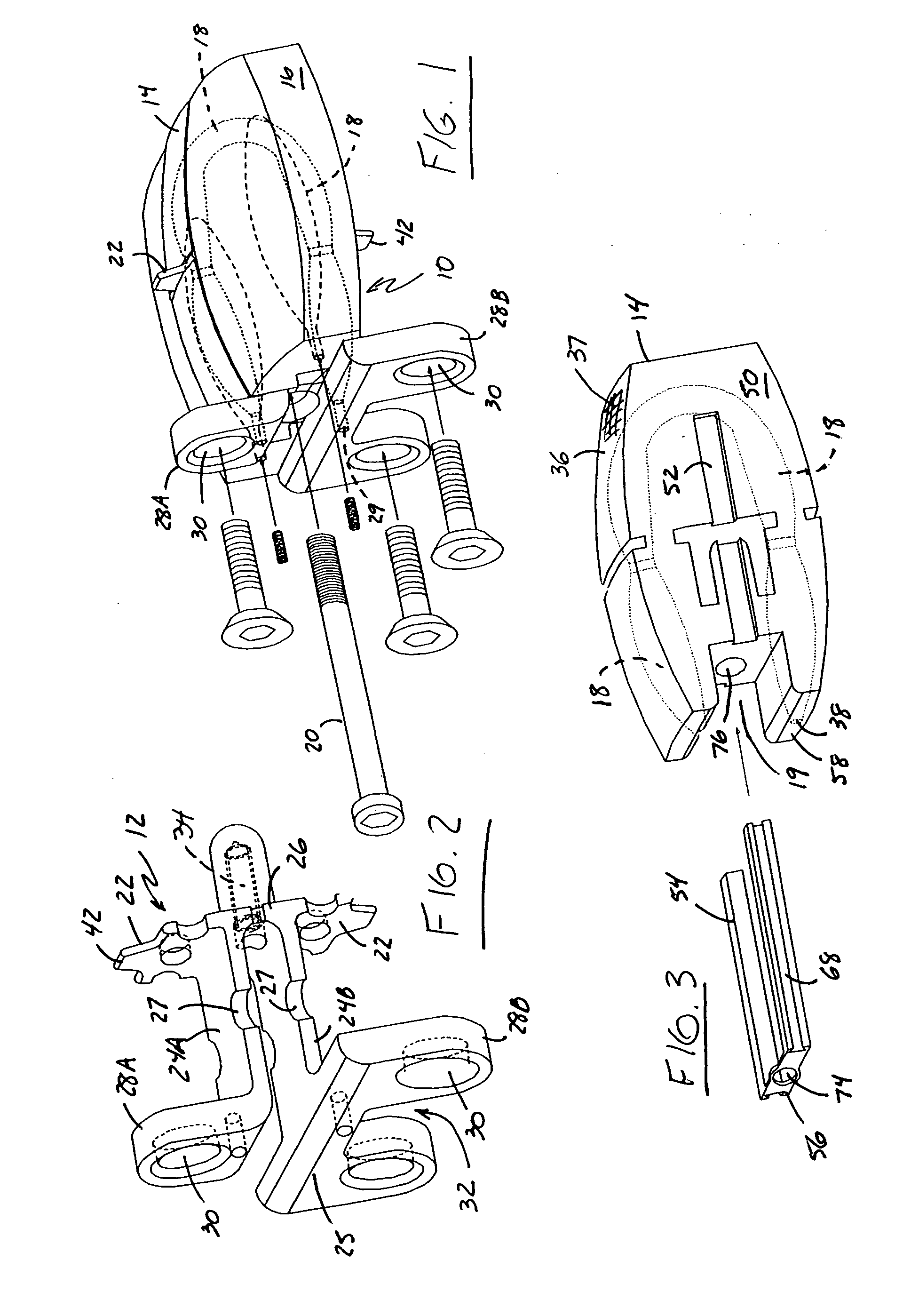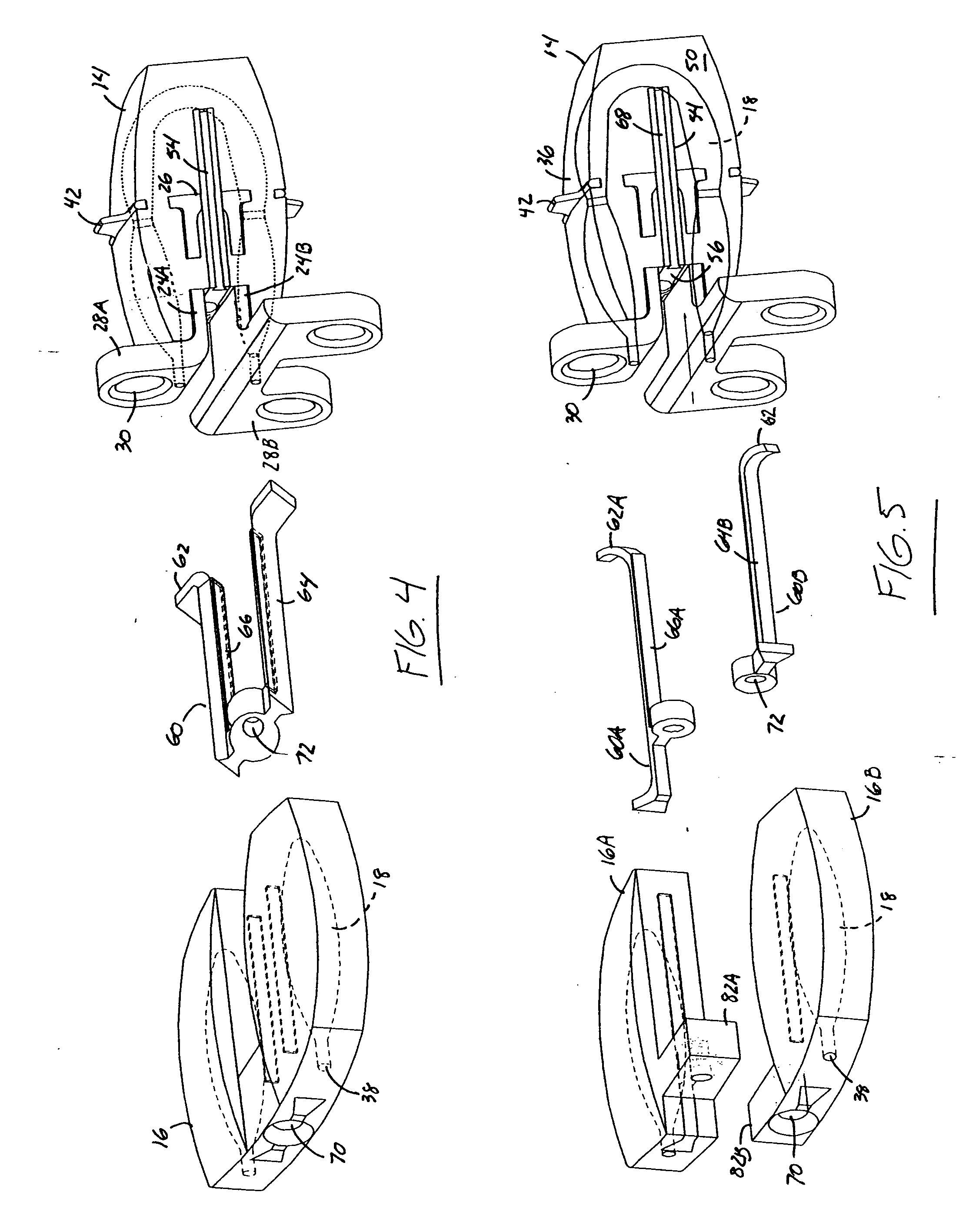Total artificial intervertebral disc
a technology of artificial discs and discs, applied in the field of artificial discs, can solve the problems of insufficient normal disc function, insufficient disc function, and a high degree of vexation in the spinal cord,
- Summary
- Abstract
- Description
- Claims
- Application Information
AI Technical Summary
Benefits of technology
Problems solved by technology
Method used
Image
Examples
Embodiment Construction
)
[0020] In more detail, FIG. 1 shows a first embodiment of an artificial disc constructed in accordance with the teachings of the present invention at reference numeral 10. Artificial disc 10 is comprised of three main components, each described in more detail below, a frame 12, first cushion 14, and second cushion 16, each of first and second cushions 14 and 16 being provided with a cavity 18 formed therein. A fourth component is the screw 20 that extends through each of frame 12 and first and second cushions 14, 16. Although shown in the figures in a configuration that reflects the use of the artificial dic 10 for replacement of an intervertebral disc in the cervical regions of the spine, those skilled in the art will recognize from the following description that, with appropriate changes in size and configuration, the artificial disc of the present invention can also be utilized to advantage for total disc replacement in other portions of the spine.
[0021] Frame 12 is better illu...
PUM
| Property | Measurement | Unit |
|---|---|---|
| height | aaaaa | aaaaa |
| width | aaaaa | aaaaa |
| permeable | aaaaa | aaaaa |
Abstract
Description
Claims
Application Information
 Login to View More
Login to View More - R&D
- Intellectual Property
- Life Sciences
- Materials
- Tech Scout
- Unparalleled Data Quality
- Higher Quality Content
- 60% Fewer Hallucinations
Browse by: Latest US Patents, China's latest patents, Technical Efficacy Thesaurus, Application Domain, Technology Topic, Popular Technical Reports.
© 2025 PatSnap. All rights reserved.Legal|Privacy policy|Modern Slavery Act Transparency Statement|Sitemap|About US| Contact US: help@patsnap.com



